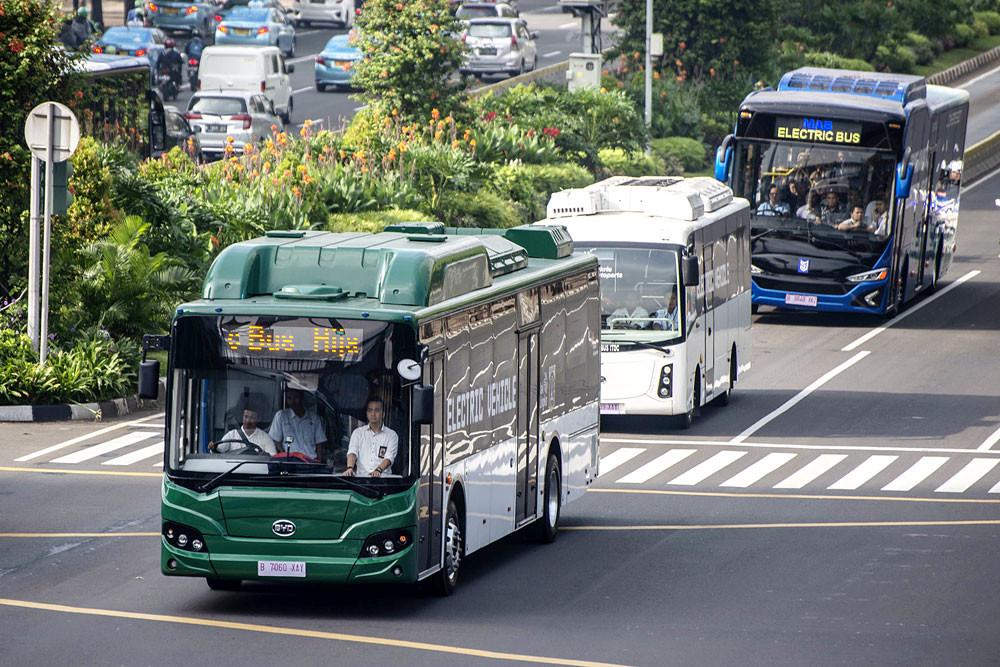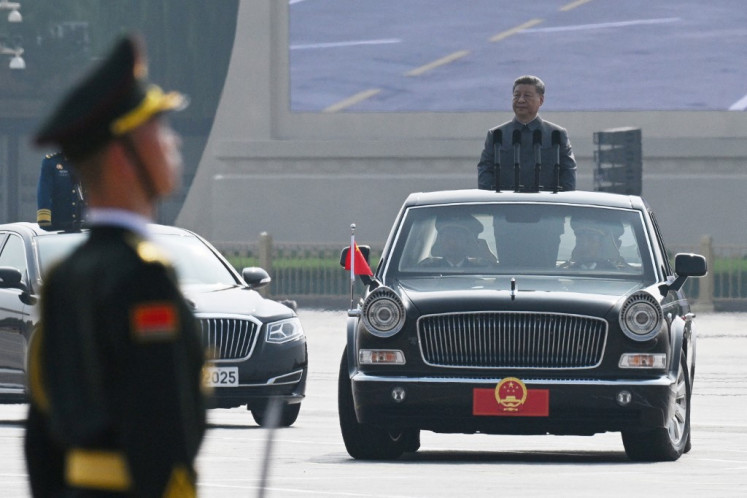Popular Reads
Top Results
Can't find what you're looking for?
View all search resultsPopular Reads
Top Results
Can't find what you're looking for?
View all search resultsForging new paths for green infrastructure in ASEAN region
If left unaddressed, the ADB forecasts that climate change could reduce Southeast Asia’s GDP by 11 percent by the end of the century.
Change text size
Gift Premium Articles
to Anyone
N
ew strategies are needed if ASEAN is finally going to crack the private sector investment class for its green and sustainable infrastructure needs.
The recent announcement by a Singaporean government agency, Infrastructure Asia and the Asian Development Bank (ADB) to develop bankable green infrastructure projects across Southeast Asia is a positive move.
We now need industry players to step up to ensure the demand for infrastructure investment is met.
The case for sustainable development across Southeast Asia is irrefutable given the region is increasingly and disproportionately being exposed to climate change. For example, Lloyd’s estimates US$22.5 billion of gross domestic product (GDP) is at risk from flooding in Southeast Asian cities alone.
If left unaddressed, the ADB forecasts that climate change could reduce Southeast Asia’s GDP by 11 percent by the end of the century.
Sitting next to this is Southeast Asia’s infrastructure needs.
What we’re talking about here are not just the roads and bridges, but also more basic necessities like electricity, water, sewerage, hospitals and schools.
Again, the ADB cites annual infrastructure investment of $210 billion until 2030 to respond to ASEAN’s rapid economic growth and challenges posed by climate change.
To fill this development gap, ASEAN member states must take steps to promote greater private sector participation in sustainable infrastructure financing.
But it’s tough going and the numbers speak for themselves.
Approximately 75 percent of green flows come from public finance and 25 percent from private finance, largely in the form of commercial loans.
The Monetary Authority of Singapore expects the share of private financing to increase to 60 percent of total green financing needs. This means that private sector participation must scale up by a factor of over ten3.
It’s important to note that a lot is already underway across the region.
Last year, Malaysia set the goal of increasing the share of its electricity generated from renewable sources to 20 percent by 2030. Indonesia announced it will adjust its fiscal policies to incentivize the production of environmentally friendly vehicles.
And Vietnam is working to complete several mega solar power plant projects later this year.
But we’re a long way from achieving this goal. To put it simply, renewable and sustainable infrastructure projects are often not bankable enough.
For example, energy transition in ASEAN will not happen overnight. In fact, the International Energy Agency says that coal will still account for the majority of the energy mix in 2040. The challenge with renewable energy projects in Asian markets such as China, the Philippines and Vietnam, is that the cost of production is still often higher than the grid price, leading to a significant dependence on subsidies.
That’s why the latest tranche of announcements by Singapore’s Infrastructure Asia and ADB is another important step.
But what else can be done to attract and retain much-needed private sector investment? Here are three other suggestions for consideration:
• Launching an annual “Doing Sustainable Infrastructure Report”. We suggest the development of a dedicated and standardized report that industry players can access which evaluates progress on projects and highlights best practice of sustainability-linked infrastructure financing in the ASEAN region.
• Create an ASEAN urban infrastructure network. Among its recent announcements, Infrastructure Asia called for a capacity-building program for regional government officials to work on developing bankable and sustainable infrastructure projects.
Under the auspice of an urban infrastructure network, we would suggest building training modules for officials on key topics in sustainable infrastructure as well as toolkits with templates and financial models for officials to leverage when developing sustainable infrastructure projects.
• Develop an ASEAN blended finance toolbox. Infrastructure Asia plans to work with the ADB to promote innovative finance solutions for sustainable infrastructure projects in the ASEAN region. In partnership with development banks and the private sector, we recommend developing a blended finance tool box which seeks to standardize instruments that address common risks associated with sustainability-linked infrastructure projects.
The development of sustainability-linked infrastructure, using public and private sector financing, is the only way that ASEAN markets can address the growing threats and opportunities that climate change presents.
That is why the partnership between Infrastructure Asia and ADB is such an integral step in Southeast Asia’s efforts to tackle the economic and environmental challenges it faces. But it can’t stop there and it cannot be left solely to these institutions.
We believe the above recommendations fit neatly within the frameworks that Infrastructure Asia and the ADB seek to establish. Industry must now step up in bringing these concepts to life. Doing so will help forge an ASEAN economic future that is underpinned by sustainable development for decades to come.
***
Head of Belt and Road Initiative and Business Corridors, Asia-Pacific, HSBC.










